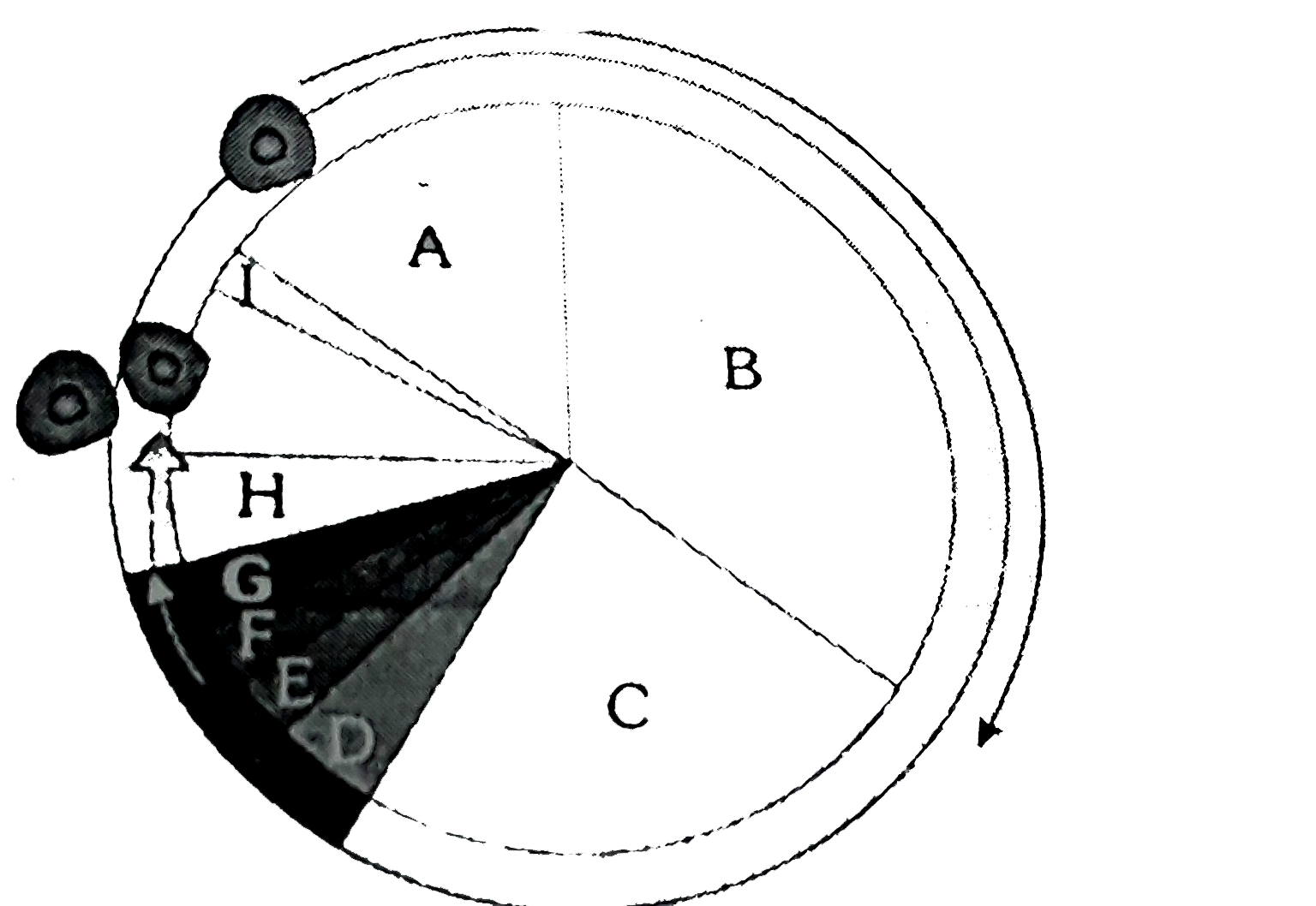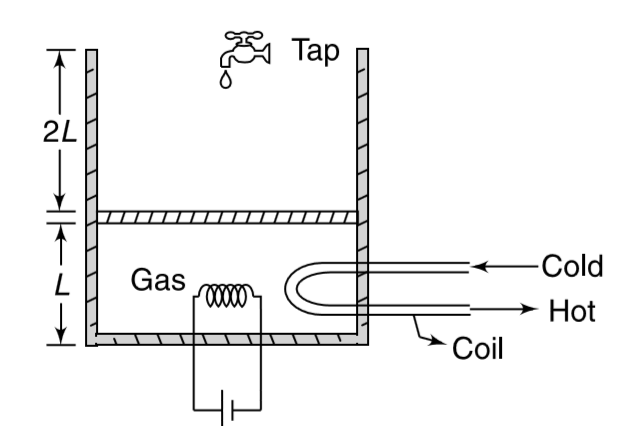Heterchormatin:
1.is the inert segment of the chromosomesadjacent to the centromere
2.Contains a highly repetitive sequence of DNA
3.is tighly coiled during the interphase
4. lightly stained reggions
1and 2 are correct
2 and 4 are correct
1 and 3 are correct
1,2 and 3 are correct
The correct Answer is:D
Step by step video, text & image solution for Heterchormatin: 1.is the inert segment of the chromosomesadjacent to the centromere 2.Contains a highly repetitive sequence of DNA 3.is tighly coiled during the interphase 4. lightly stained reggions by Biology experts to help you in doubts & scoring excellent marks in Class 12 exams.
Updated on:21/07/2023Topper's Solved these Questions
- CHROMOSOMAL BASIS OF INHERITANCEBOOK - GRB PUBLICATIONCHAPTER - CHROMOSOMAL BASIS OF INHERITANCEEXERCISE - NEUROSPORA genetics
24 Videos
- BIOTECHNOLOGY : PRINCIPLES AND PROCESSESBOOK - GRB PUBLICATIONCHAPTER - BIOTECHNOLOGY : PRINCIPLES AND PROCESSESEXERCISE - Exemplar Problems
33 Videos
- ECOSYSTEM BOOK - GRB PUBLICATIONCHAPTER - ECOSYSTEM EXERCISE - EXEMPLAR PROBLEMS
41 Videos
Similar Questions
A thermocol vessel contains 0.5kg of distilled water at 30∘C. A metal coil of area 5×10−3m2, number of turns 100, mass 0.06kg and resistance 1.6Ω is lying horizontally at the bottom of the vessel. A uniform time-varying magnetic field is set up to pass vertically through the coil at time t=0. The field is first increased from zero to 0.8T at a constant rate between 0 and 0.2s and then decreased to zero at the same rate between 0.2and0.4s. the cycle is repeated 12000 times. Make sketches of the current through the coil and the power dissipated in the coil as function of time for the first two cycles. Clearly indicate the magnitude of the quantities on the axes. Assumes that no heat is lost to the vessel or the surroundings. Determine the final tempreture of water under thermal equilibrium. Specific heat of metal =500jkg−1K−1 and the specific heat of water =4200jkg−1K−1. Neglect the inductance of coil.
View Solution
Answer the following questions regarding the events carried out in the labelled parts of the ab ove given diagram.
(1) DNA synthesis occurs in
(2) Condenstaion of chromosomal material takes place in
(3) Attachement of spindle fibres to kinetochores of chromosomes during
(4) Initiation of the assembly of mitotic spindle during
(5). Splitting of centromere and separation of chromatids in
(6) Movement of chromatids to opposite poles during
(7) Reformation of nucleolus, Golgi complex and ER occurs in
(8) Alignment of chromosomes along metaphase plate during
(9) During of cytoplasm during
(10) Preparation of cell division takes place during.
View Solution
Knowledge Check
In a parallelogram OABC with position vectors of A is 3ˆi+4ˆjandCis4ˆi+3ˆj with reference to O as origin. A point E is taken on the side BC which divides it in the the ratio of 2:1. Also, the line segment AE intersects the line bisecting the ∠AOC internally at P. CP when extended meets AB at F.
Q. The equation of plane containing line AC and at a macimum distance from B isAr⋅(ˆi+ˆj)=7Br⋅(ˆi−ˆj)=7Cr⋅(2ˆi−ˆj)=7Dr⋅(3ˆi+4ˆj)=7Read the statements below regarding the nucleus of a cell. Identify them as true or false and select the correct combination option.
I. The nucleus displays an elaborate nucleoprotein fiber called chromatin during the interphase of the cell cycle.
II. The space between the parallel membranes of the nuclear envelope is called the nucleoplasm.
III. Nucleus was discovered first by Flemming.
IV. The nuclear pores within the nuclear envelope are formed by the fusion of both membranes.
No.IIIIIIIV1TrueTrueFalseFalse2TrueFalseFalseFalse3TrueTrueFalseFalse4TrueFalseFalseTrueA1B2C3D4What are correctly matched :
1. Ligase - Joins short segments of DNA together
2. DNA polymerase - cuts DNA at specific site
3. Helicase - breaks hydrogen bond between complementary pairs during DNA replicationA1,2,3 correctB1,2 correctC2,3 correctD1, 3 correct
A cylindrical container of height 3L and cross sectional area A is fitted with a smooth movable piston of negligible weight. It contains an ideal diatomic gas. Under normal atmospheric pressure P0 the piston stays in equilibrium at a height L above the base of the container. The gas chamber is provided with a heater and a copper coil through which a cold liquid can be circulated to extract heat from the gas. Volume occupied by the heater and the liquid coil is negligible. Following set of operations are performed to take the gas through a cyclic process.
(1) Heater is switched on. At the same time a tap above the cylinder is opened. Water fills slowly in the container above the piston and it is observed that the piston does not move. Water is allowed to fill the container so that the height of water column becomes L. Now the tap is closed.
(2) The heater is kept on and the piston slowly moves up. Heater is switched off at the time water is at brink of overflowing.
(3) Now the cold liquid is allowed to pass through the coil. The liquid extracts heat from the gas. Water is removed from the container so as to keep the position of piston fixed. Entire water is removed and the gas is brought back to atmospheric pressure.
(4) The circulation of cold liquid is continued and the piston slowly falls down to the original height L above the base of the container. Circulation of liquid is stopped. Assume that the container is made of adiabatic wall and density of water is ρ. Force on piston due to impact of falling water may be neglected.
(a) Draw the entire cycle on a P–V graph.
(b) Find the amount of heat supplied by the heater and the amount of heat extracted by the cold liquid from the gas during the complete cycle.

View SolutionRead the following four statements (A - D)
1. The characters blend in the heterozygous condition during Mendelian inheritance .
2. Change in a single base pair of DNA does not cause mutation .
3. Cancer cells can show chromosomal aberrations.
4. In insect, sex chromosomes in the male are ZZ and in females are ZW.
View SolutionArrange the following points in a sequence for derivation of formulae of compounds.
(1) The valencies of the ions or radicals are written below the radicals without positive and negative sign
(2) If the valencies have common factors, then they are divided by the highest common factor.
(3) The magnitude of valencies should be inter changed and written as subscripts on the right side of the respective ions.
(4) The positive radical followed by negative radical are written with their charges.
(5) If the radicals contain more than one atom, they are enclosed in brackets and the appropriate valency (more than one) written as subscriptsoutside the bracket.
View SolutionSheela designs an experiment to test the effect of solute concentration during osmosis. She takes four equal sized potato cubes having an identical weight and places each cube in four separate test tubes I, II, III, and IV, containing 1%, 2%, 3%, and 4% sucrose concentrations respectively. After one hour, she removes the cubes from the test tubes, blots the pieces with a paper towel, and weighs them to find the final mass of each cube. The solution in test tube Ill was hypertonic to the cytoplasm of the potato cells. What change will be observed in the potato cube of test tube Ill?
View SolutionStabilities of alkanes can be compared by converting these compounds to a common product and comparing the amount of the heat given off. One possiblitiy would be to measure the heat of combustion from converting alkenes to xo2 and H2O . The heats of combustion are of large values and measuring small difference in these large numbers is difficult. Alkene of the lowest heat of combustion among isomeric alkenes is of the lowest energy and is most stable.
Th stability of alkenes is often compared by meansuring the ehat of hydrogenation 9 heat given off, ΔH∘h during catalytic hydrogenation. The heat of hydrogenation is in smal number, which provides more accurate energy difference.
For a compound containing more than one double bond, Δ∘h is the sum of heat of hydrogenation of individual double bonds. For non − conjugated diens, this additive relatioship is found to hold. For conjugated dienes, however, the measured value is slightly lower than expected. Cumulated dienes, which are even less stable than non − conjugated dienes.
The more stable is the alkene, lower is the heat of combustion and heat of hydrogenation. More highly substituted double bonds are usually more stable. In case of cyclokanes, compounds having higher angle strin are less stable.
If the heat of hydrogenation of cyclooctene is about 23kcalmo−1, what would be the probable ΔHb or 1,3,5,7−cyclooctatetraene ?
View Solution